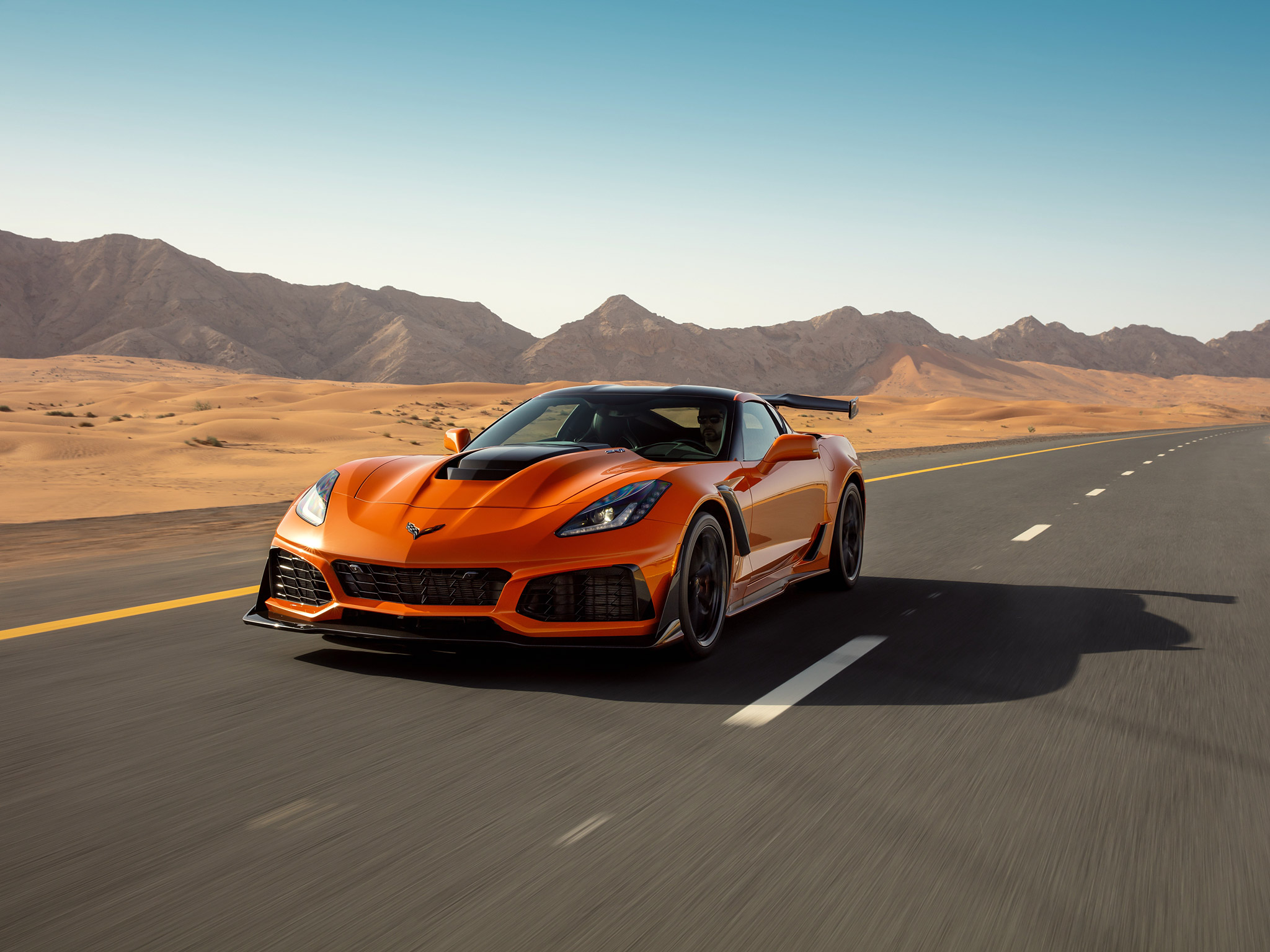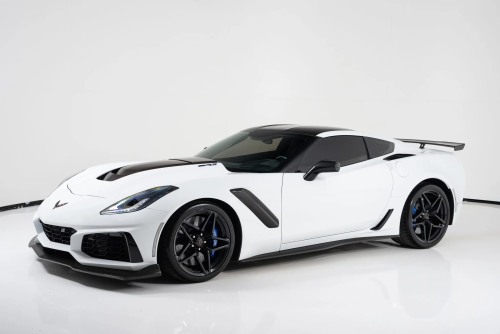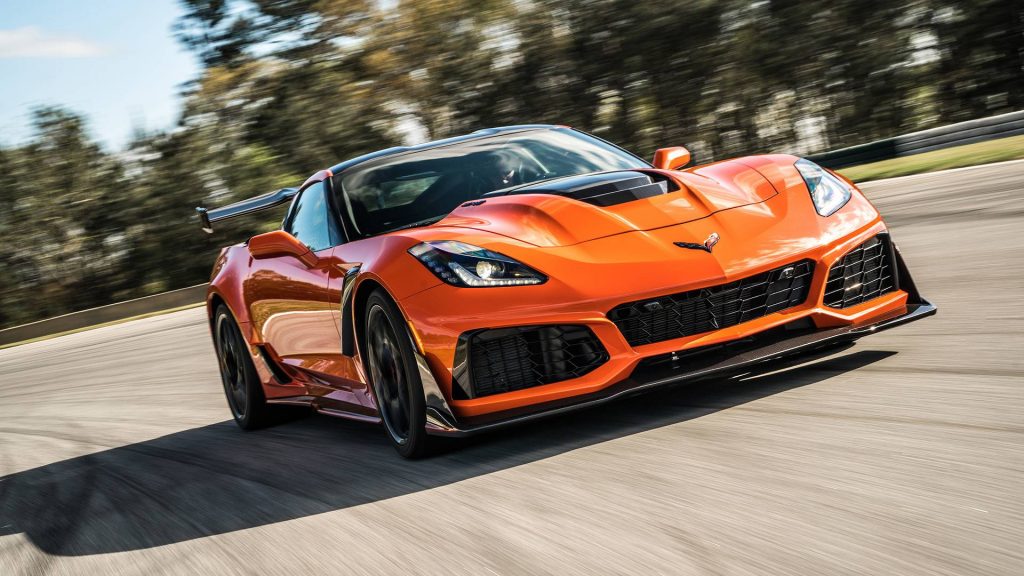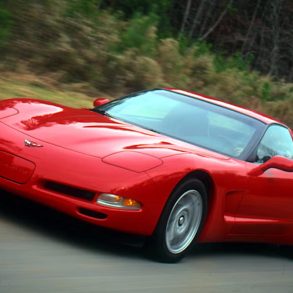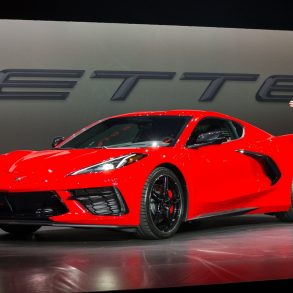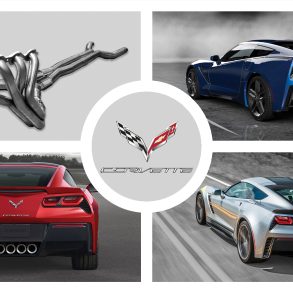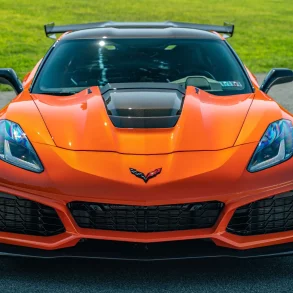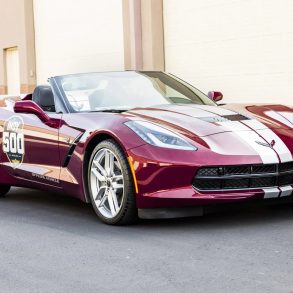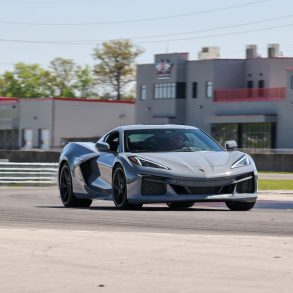2019 Corvette – The Ultimate Guide
The 2019 model year was an exciting time in the history of the Chevy Corvette. It marked the final year of the seventh-generation Corvette Stingray (and all its higher-performance iterations.) More than that though, it welcomed the arrival of the ultimate rear wheel drive Corvette – the seventh-generation, 755 horsepower ZR1 – as well as the official unveiling of the 2020 Mid-Engine Corvette.
The 2019 Corvette ZR1 – the Return of the King
The 2019 Corvette ZR1 was developed with the intent of building a super-car iteration of the Corvette that pushed the limits of the brand to the highest power output, greatest track performance and most advanced technology package in its sixty-six year production history.
The 2019 ZR1 was powered by Chevrolet’s exclusive LT5 supercharged engine. This 6.2L V-8 engine advanced Corvette’s supercharging legacy, which began with the 2009 sixth-generation ZR1 and continued with the 2015 seventh-generation Z06. Rated at an SAE-certified 755 horsepower (563 kW) and 715 lb -ft (969 Nm) of torque, the LT5 delivered the highest engine output ever for a Chevrolet production vehicle. This incredible performance output was achieved in large part because of the new, more-efficient inter-cooled supercharger system, which offered 52 percent more displacement than the aforementioned Zo6’s LT4 supercharger. Additionally, the 2019 Corvette ZR1 featured GM’s first-ever dual-fuel-injection system, which employed both primary direct injection and supplemental port injection.
Of course, even the most-stout engine can be limited by the aerodynamics of the car into which it is placed. In this instance, the pairing was perfect.
The 2019 ZR1 elevated Corvette’s track capability by offering consumers two wind tunnel-developed aerodynamic packages, both of which helped distinguish the car as the fastest production Corvette to date. The first package – which featured the standard rear Low Wing – offered consumers the option to achieve the fastest speeds on the track. The optional High Wing offered consumers an available two-way-adjustable high-wing that produced maximum downforce on the track – about 60 percent more downforce that the 2019 Z06 with the available Z07 Performance Package. Both variants of the 2019 Corvette ZR1 also featured a Chevrolet first – a downforce-enhancing front underwing.
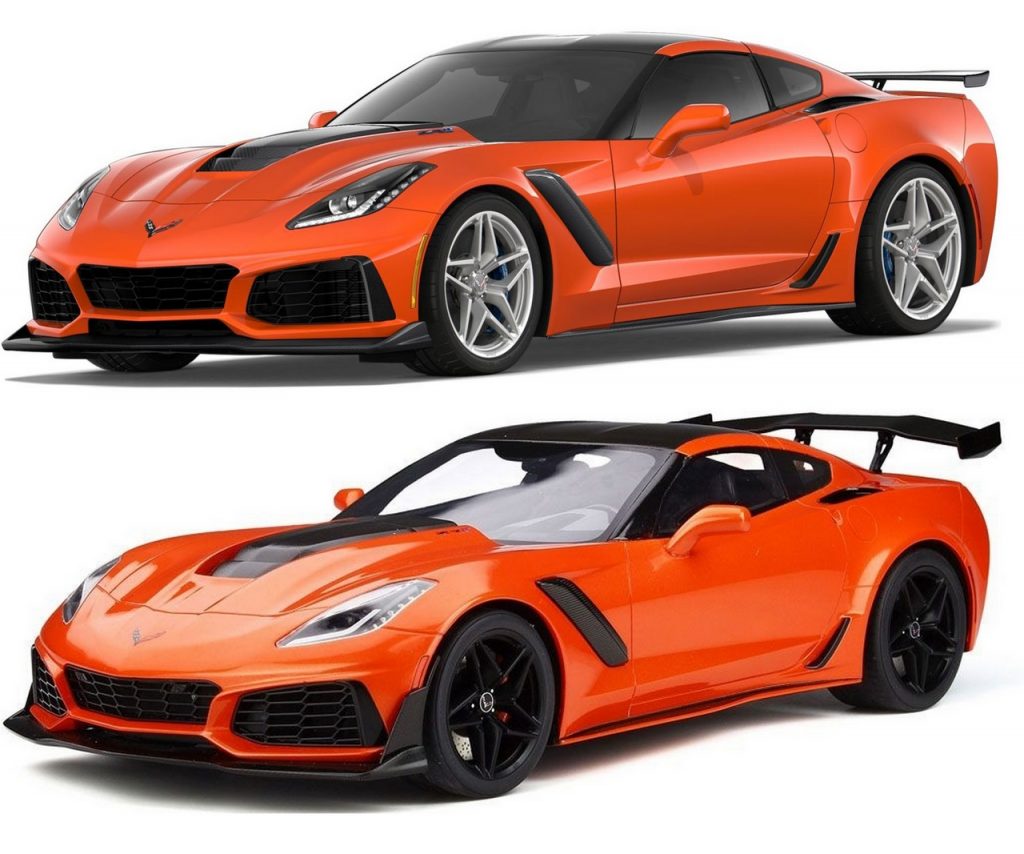
“As the highest-performing Corvette ever, the ZR1’s design supports its capability in every way,” said Kirk Bennion, Exterior Design Manager. “The new wings, for example, help generate more downforce without adding drag, enhancing road holding and top speed.”
As the highest-performing Corvette ever, the ZR1’s design supports its capability in every way…he new wings, for example, help generate more downforce without adding drag, enhancing road holding and top speed – Kirk Bennion
The adjustable High Wing was actually part of the new ZTK Performance Package, which also included a front splitter with carbon-fiber end caps, Michelin Pilot Sport Cup 2 Summer-Only tires and specific chassis and Magnetic Ride Control tuning for greater cornering grip.
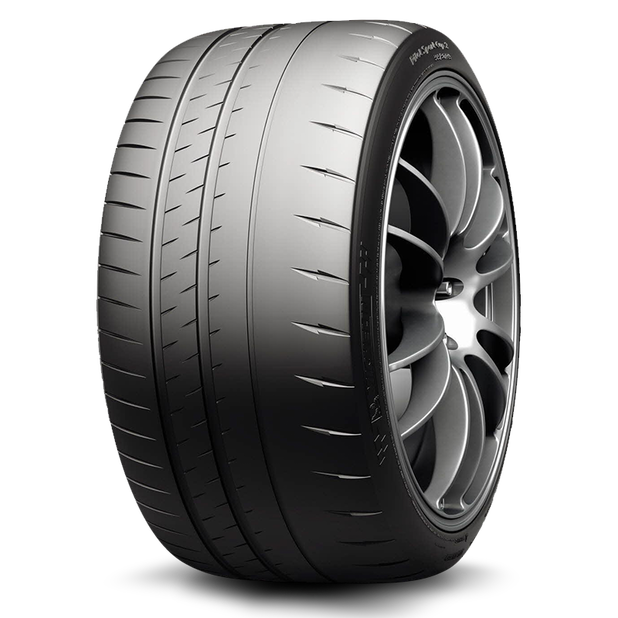
The 2019 Corvette ZR1 also featured an all-new front fasica that was designed to channel air into the car for both the car’s propulsion system and drivetrain cooling. Four new radiators were added to the car as well, bringing the heat-exchanger total count to thirteen. A special carbon-fiber “halo” hood was developed that featured an open center section which enabled the Lt5’s sueprcharger/intercooler assembly to protrude slightly thru the hood. Additional features, including the aforementioned aero-packages with stanchion-mounted wings, helped keep the ZR1 glued to the track and enabled drivers to achieve faster lap times.
“I’ve never driven a Corvette like this before, and nobody else has either, because there’s never been one like this before,” said Mark Reuss, executive vice president, Global Product Development, Purchasing and Supply Chain. “Its unprecedented performance puts all other global super-cars on notice that the ZR1 is back.”
The Rest of the Pack
While there’s no question that the ZR1 was the center-piece of the 2019 Corvette model year, its arrival was still somewhat overshadowed by the certainty that GM was close to unveiling the eighth-generation, mid-engine Corvette! In fact, the ZR1’s introduction was the only appreciable change to the seventh-generation Corvette that year. The base models, the Grand Sports and the Z06 Corvettes all returned for the final model year as well, but without any significant changes to any of these “lesser” models. Chevrolet did introduce two new paint colors for the 2019 Corvette – Elkhart Lake Blue and Shadow Grey.
The Final Rear-Engine Corvette Pace Car at Indy?
For the 2019 running of the Indianapolis 500, Chevrolet announced that a Corvette Grand Sport Coupe would serve as the official pace car.
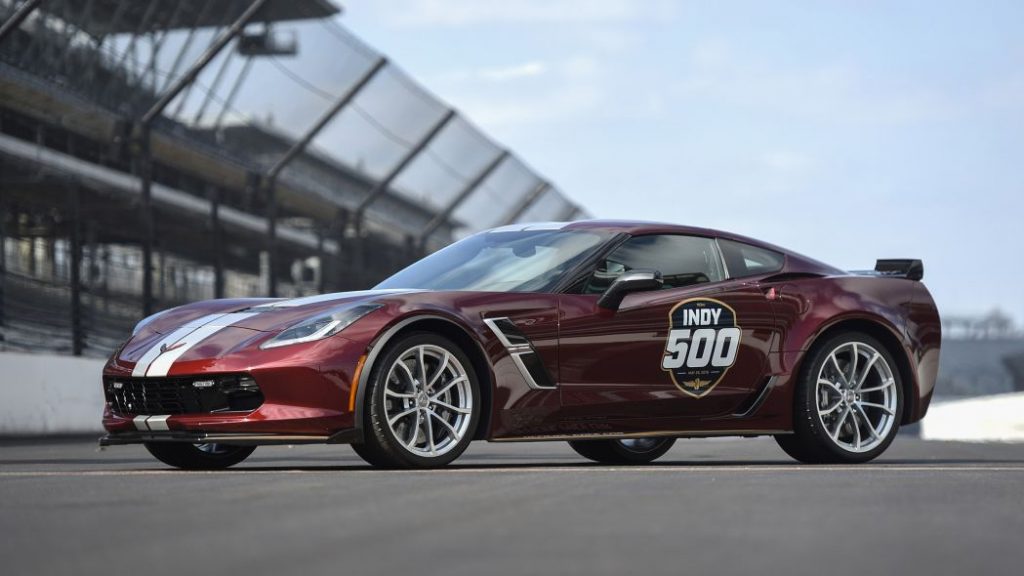
The announcement that the 2019 Corvette would be leading the field as official pace car of the famous race was well-received by enthusiasts the world over. It was especially momentous given recent announcements by Chevrolet that a mid-engine Corvette was imminent. While this would be the sixteenth time that a Corvette would serve as the official pace car for the Indianapolis 500, its inclusion in this race was special because of the real possibility that it would be the last of its kind – namely, a rear-wheel-drive Corvette – to ever do so.
The 2019 Corvette Grand Sport Pace Car was finished in Long Beach Red Metallic Tintcoat. It received unique GM-designed Indy 500 decals and silver racing stripes. It also featured the following options:
- An LT1 6.2-liter V-8 DI aluminum engine with 460 horsepower and 465 lb-ft of torque.
- An 8-speed paddle-shift automatic transmission.
- A Dry-sump oil system.
- Performance suspension with Magnetic Ride Control.
- Brembo® carbon ceramic brakes.
- Grand Sport aluminum wheels: 19-inch front and 20-inch rear.
- Carbon Flash painted Carbon Fiber Ground Effects Package.
- Competition Sport Bucket Seats.
- Performance Data Recorder.
Piloting this latest Corvette pace car was none-other that NASCAR driver Dale Earnhardt Jr. As the flag dropped on May 26, 2019, Earnhardt led a field of 33 drivers around the historic track.
“We continue to be grateful for our long-running partnership with Chevrolet,” Indianapolis Motor Speedway President J. Douglas Boles said. “It’s such a strong bond that has proven integral to the success of our events. The 2019 Corvette Grand Sport is a world-class machine that exudes speed, performance and excitement, a perfect fit to lead the 500 field. Personally, there is nothing quite like driving an Indianapolis 500 Chevrolet Corvette around Indiana in May, and I know our fans also will enjoy seeing the Corvette Stingray festival cars around town throughout the Month of May.”
Mark Reuss and the Corvette ZR1 Pace Car
On Sunday, June 3rd, while leading a field of IndyCar race cars at the second race of the Detroit Grand Prix, the Corvette ZR1 Pace Car spun at the start of its first lap around the Raceway on Belle Isle, striking a wall with considerable force.
Mark Reuss, GM‘s Vice President of Global Product Development, was piloting the car at the time of the crash. Although the front-end of the car was significantly damaged after colliding with the barrier wall, neither Reuss, nor passenger and Indy Car Official, Mark Sandy, were injured in the crash.
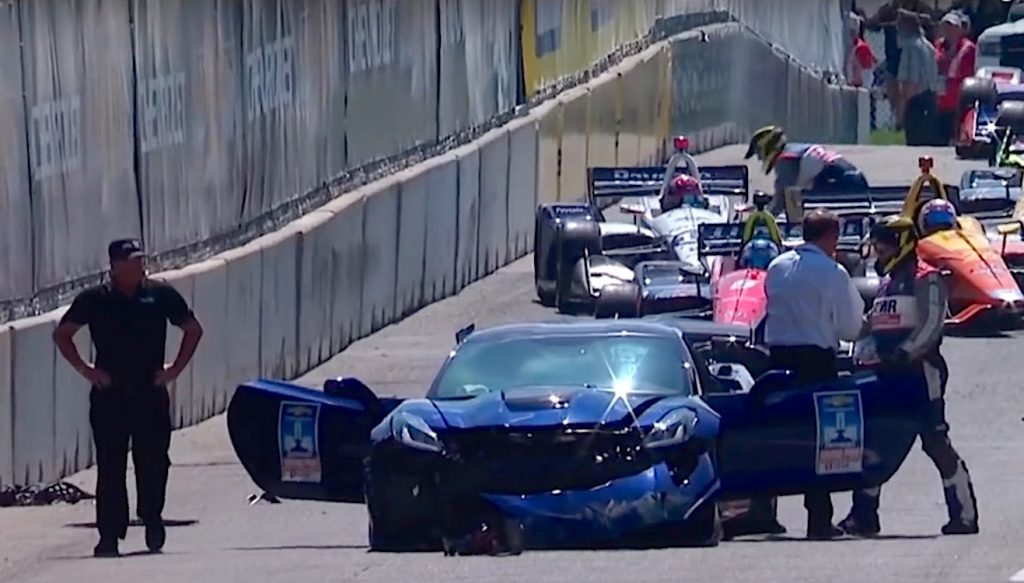
Debris from the car was scattered across the track just after turn two, bringing the entire field of IndyCar series race cars to a stop. The field, which consisted of 24 cars-in-all, remained in place on the track until enough debris was cleared to allow them to pass safely. They then returned to the pits until the remaining debris was cleared and the backup pace car was put into service. The crash delayed the start of the race by approximately 30 minutes.


